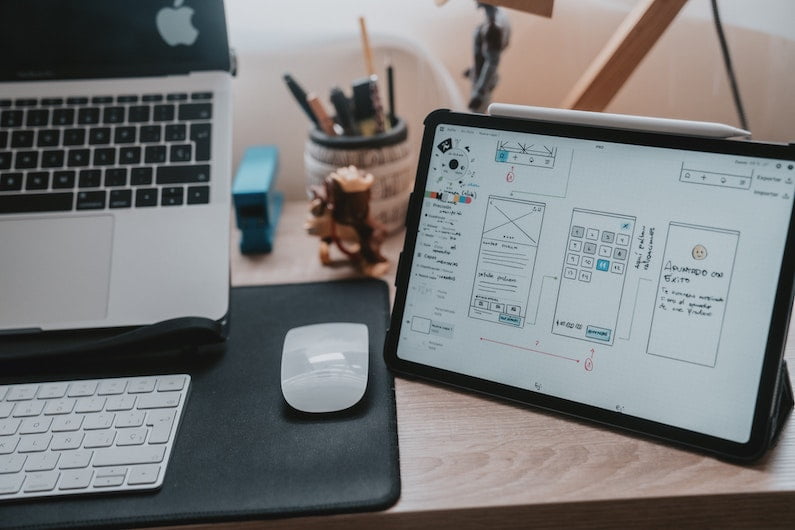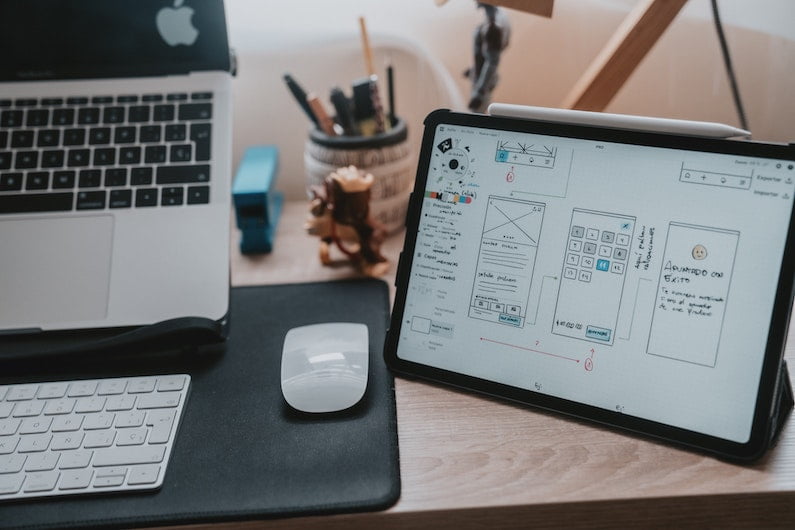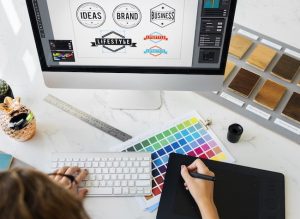In the word of Alan Smith the debates over the definitions of UX and UI have been going on for almost as long as the terms have been around. UX stands for User Experience, and UI stands for User Interface.
User Interface (UI)
The user interface (UI) is the point of human-computer interaction and communication in a device. This can include display screens, keyboards, a mouse and the appearance of a desktop. It is also the way through which a user interacts with an application or a website. The growing dependence of many businesses on web applications and mobile applications has led many companies to place increased priority on UI in an effort to improve the user’s overall experience.
Most hardware devices also include a user interface, though it is typically not as complex as a software interface. A common example of a hardware device with a user interface is a remote control. Other devices, such as digital cameras, audio mixing consoles, and stereo systems also have a user interface. UI tools give designers what they need to design accurate hi-fi wireframes, mockups, and prototypes and render minimally viable products. They represent the nuts and bolts of a design, communicating its functionality. UX tools focus on the user and how they’ll experience the content.

Types of user interfaces
The various types of user interfaces are-
- Graphical user interface (GUI)
- Command line interface (CLI)
- Menu-driven user interface
- Touch user interface
- Voice user interface (VUI)
- Form-based user interface
- Natural language user interface
Tools for UX designers
- Justinmind. As far as UX tools go, the Justinmind prototyping tool will make your life a lot easier as a UX designer. …
- In Vision. In Vision have also made quite a name for themselves in the UI-UX design industry.
- Proto.io.
- Microsoft Visio.
- Omnigraffle.
- Lucidchart.
- Storyboard
- UXCam.
History of UI
In early computers, there was very little user interface except for a few buttons at an operator’s console. Many of these early computers used punched cards, prepared using keypunch machines, as the primary method of input for computer programs and data. While punched cards have been essentially obsolete in computing since 2012, some voting machines still use a punched card system.
The user interface evolved with the introduction of the command line interface, which first appeared as a nearly blank display screen with a line for user input. Users relied on a keyboard and a set of commands to navigate exchanges of information with the computer. This command line interface led to one in which menus (lists of choices written in text) predominated.
Finally, the GUI arrived, originating mainly in Xerox’s Palo Alto Research Center (PARC), adopted and enhanced by Apple and effectively standardized by Microsoft in its Windows operating systems. Elements of a GUI include such things as windows, pull-down menus, buttons, scroll bars and icons. With the increasing use of multimedia as part of the GUI, sound, voice, motion video and virtual reality are increasingly becoming the GUI for many applications.
User experience (UX)
User experience (UX) is so confusing because the term can take on several different definitions, even within the UX community. The concept of user experience is also used throughout many industries, including software design, website design, app design, and more.
The technical definition of UX as per ISO 9241-210 is- which describes the ergonomics of human-system interaction, defines user experience as an individual’s perceptions and responses that result from using or the anticipated use of a product, service, or system. User experience (UX) is the interaction and experience users have with a company’s products and services.The UX consists of the user’s interactions with placing their order on a company’s website, their in-store experience of picking up their order, and also their satisfaction with their food. UX is important for the organizations because it tries to fulfill the user’s needs. It aims to provide positive experiences that keep users loyal to the product or brand. Additionally, a meaningful user experience allows you to define customer journeys on your website that are most conducive to business success.
UI and UX
The UI is often talked about in conjunction with user experience (UX), which may include the aesthetic appearance of the device, response time and the content that is presented to the user within the context of the user interface. Both terms fall under the concept of human-computer interaction (HCI), which is the field of study focusing on the creation of computer technology and the interaction between humans and all forms of IT design. Specifically, HCI studies areas such as UCD, UI design and UX design.
An increasing focus on creating an optimized user experience has led some to carve out careers as UI and UX experts. Certain languages, such as HTML and CSS, have been geared toward making it easier to create a strong user interface and experience.

Best Practices for UI Design and UX
The following are the best practices for UI design and UX.
1. User’s Focus and attention must be Properly Controlled
The UI must have every very interface should with clear starting point. Where should viewers look first, UI designers have to make it clear this and there must be guide users through visual hierarchy as where should they look first, second and after that. The UI must be designed and the layout must be bases on Gestalt principles. The UI must depict interface changes without disrupting the user and it must remove unnecessary information.
2. Guide Users properly towards the goal
The designers must position frequent functions and important data closer to users and UI must communicate the statuses of interactions. It must offer multiple ways to accomplish the same task and must communicate the requirements for an interaction. The UI must reward those users who are making progress and must solve the user’s core intent.
3. Reduction of Mental Effort and maintaining flow of Information
UI must minimize the user’s calculations and convey him, his current location within the interface. One of the strategies is to simplify the tasks and give feedback to user after each interaction. The UI must minimize the user’s negative effect of waiting time and must minimize user’s reliance on his memory.
4. Minimizing compatibility
The one of the practice is to minimize the compatibility with user’s knowledge and skills and work flow. The UI must minimize the accessibility of your interface and maximize the compatibility of all inputs.
5. Help the users in Overcoming Errors
Your UI to enhance the users UX must prevent the possibility of errors so it must signal the errors and must differentiate the powerful functions to minimize the slips. It should provide the easy way to revert or escape and must minimize the negative effect of leaving sequences. It must keep the record of all previous actions of the user’s and must analyze the user’s behavior to find the interface issues.

Conclusion
The above mentioned are some of the best practices of UI and UX. The designer must read the below mentioned books to enhance the experience of user’s and while designing the UI can also read the articles –
Books
- Design Elements: A Graphic Style Manual by Timothy Samara
- Graphic Design Solutions by Robin Landa
- Universal Principles of Design by William Lidwell, Kristina Holden, & Jill Butle
- Digital Design Essentials by Raj Lal
- Design for Emotion by Trevor van Gorp and Edie Adams
- Usable Usability by Eric Reiss
- Visual Thinking for Design by Colin Ware
- The UX Book by Rex Hartson and Pardha Pyla
- The Design of Everyday Things by Don Norman
- Simple and Usable by Giles Colborne
- UX Strategy by Jaime Levy
- Lean UX by Jeff Gothelf and Josh Seiden
- Interdisciplinary Interaction Design by James Pannafino
- Don’t Make Me Think by Steve Krug
- 100 Things Every Designer Needs to Know About People by Susan Weinschenk
- 100 MORE Things Every Designer Needs to Know About People by Susan Weinschenk
- Neuro Web Design by Susan Weinschenk
- The Non-Designer’s Design Book by Robin Williams
- Designing Interfaces by Jenifer Tidwell
- CSS Secrets by Lea Verou
- Universal Methods of Design by Bella Martin and Bruce Harrington
- Envisioning Information by Edward Tufte



